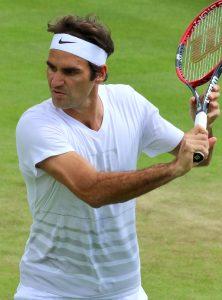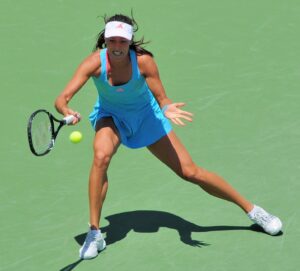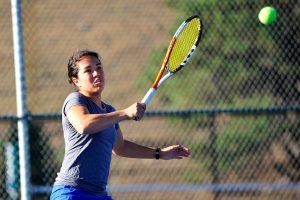We may earn money or products from the companies mentioned in this post.
How To Play Professional Tennis

Introduction to professional tennis
Tennis, a sport with a rich history, has evolved into a popular and highly competitive professional discipline Dating back to the 19th century, this captivating game has captivated audiences worldwide with its thrilling matches and iconic players Today, professional tennis holds a special place in the hearts of sports enthusiasts who admire the skill, finesse, and determination displayed on the court
Essential skills and techniques for playing professional tennis
To excel in professional tennis, mastering the fundamental strokes is crucial These include the forehand, backhand, serve, volley, and overhead smash Each stroke requires precision and control to deliver powerful shots while adapting to various playing conditions
In addition to strokes, developing footwork and agility is essential for swift movement on the court Proper positioning and quick reflexes enable players to reach shots efficiently and maintain an advantageous position during rallies Drills focusing on speed and stamina can enhance an athlete’s overall performance
A tactical understanding of the game is vital for success in professional tennis This includes adapting one’s strategy based on an opponent’s playstyle, recognizing patterns in their game, and exploiting weaknesses effectively
Training, fitness, and nutrition for aspiring professionals
Becoming a professional tennis player requires dedication not only on the court but also in training routines off-court Creating effective training routines involves incorporating physical conditioning exercises that focus on strength and endurance while also honing specific technical skills through drills
Rest and recovery play a significant role in an athlete’s regimen as well Preventing injuries through proper stretching techniques before workouts or matches is crucial for maintaining peak physical condition Additionally, ensuring adequate sleep and relaxation allows athletes to recharge both mentally and physically
Proper nutrition is essential for optimal performance Eating balanced meals that provide the necessary macro- and micronutrients fuels the body, allowing players to perform at their best Hydration strategies during training and competition are also vital to maintaining energy levels and preventing dehydration
Pathway to becoming a professional tennis player
Aspiring professional tennis players can pursue different pathways towards achieving their goals One option is through college or university tennis programs, which offer scholarship opportunities at various institutions Balancing education with competitive sports allows athletes to develop their skills while obtaining a degree
Another pathway involves participating in junior circuit competitions such as ITF Junior tournaments These competitions provide valuable experience by competing internationally and gaining exposure to different playing styles Achieving rankings as an amateur player can open doors to higher-level tournaments and potential sponsorship opportunities
Professional tour qualifications: ATP/WTA tours

Transitioning from amateur to professional status is an exciting and challenging journey for any aspiring tennis player It requires a combination of skill, dedication, and determination to make the leap into the competitive world of the ATP/WTA tours As an amateur, you may have already honed your skills and gained valuable experience in local tournaments However, to become a professional player, you need to meet certain criteria set by the Association of Tennis Professionals (ATP) and Women’s Tennis Association (WTA).
Transitioning from amateur to professional status
Making the transition from being an amateur tennis player to a professional involves several steps Firstly, you need to gain enough experience by competing in various amateur tournaments This will help you gauge your level of play against other talented players and identify areas for improvement
Once you feel ready, it’s time to start participating in professional tournaments where you can earn ranking points These points are crucial for establishing your position within the ATP/WTA rankings, which determine your eligibility for higher-level events
Earning points and rankings in professional tournaments
In order to earn ranking points on the ATP/WTA tours, you must perform well in professional tournaments at different levels – Grand Slams, Masters 1000s/Premier Mandatory events, International series events/International Premier events, and Challenger/Future events
The number of points awarded depends on the tournament’s category and the round reached The better your performance, the more points you accumulate towards climbing up the rankings ladder
Finding sponsors and financial support

As a professional tennis player aiming for success on the ATP/WTA tours, finding sponsors becomes crucial not only for financial support but also for building your brand and reputation Having sponsors can provide you with the necessary resources, such as travel expenses, coaching fees, equipment, and even personal branding opportunities
a Approaching companies for endorsement deals
When approaching companies for endorsement deals, it’s important to showcase your achievements and potential value as an athlete Highlighting your skills, ranking progressions, and unique qualities will make you stand out from other players seeking sponsorships
Developing a strong pitch that outlines what you can offer in return for their support is vital This could include promoting their products or services on social media platforms, wearing their logo during matches and press conferences, or participating in promotional events
b Maximizing your brand value as an athlete
Apart from securing endorsement deals, maximizing your brand value as an athlete is essential for long-term success Building a strong personal brand involves creating a unique identity that resonates with fans and sponsors alike
Engaging with fans through social media platforms, sharing insights into your training routines and daily life as a professional player can help create a loyal following Additionally, being actively involved in charitable activities or community initiatives showcases your values beyond the tennis court
Ultimately, by successfully transitioning from amateur to professional status, earning points and rankings in professional tournaments, finding sponsors through endorsement deals, and maximizing your brand value as an athlete; you’ll be setting yourself up for a successful career on the ATP/WTA tours
Useful Links

How to become a professional tennis player: the secret truth
You do not Choose to be a Professional Tennis Player
What are the requirements to become a professional tennis …
Inside the struggle to survive in pro tennis
7 Steps To Become a Professional Tennis Player
Become a Pro | Play
Tennis rules: Know how to play
Player Development
How to Make Pro Tennis a Realistic Career
How To Become a Professional Tennis Player – CLIMB
How to become a professional tennis player
In Tennis, the ‘Nepo Babies’ Are Everywhere
Pathways
The Average Salary of Professional Tennis Players
Major professional tennis tournaments before the Open Era
Become a Pro
Play Tennis at a High Level, No Matter Your Age






